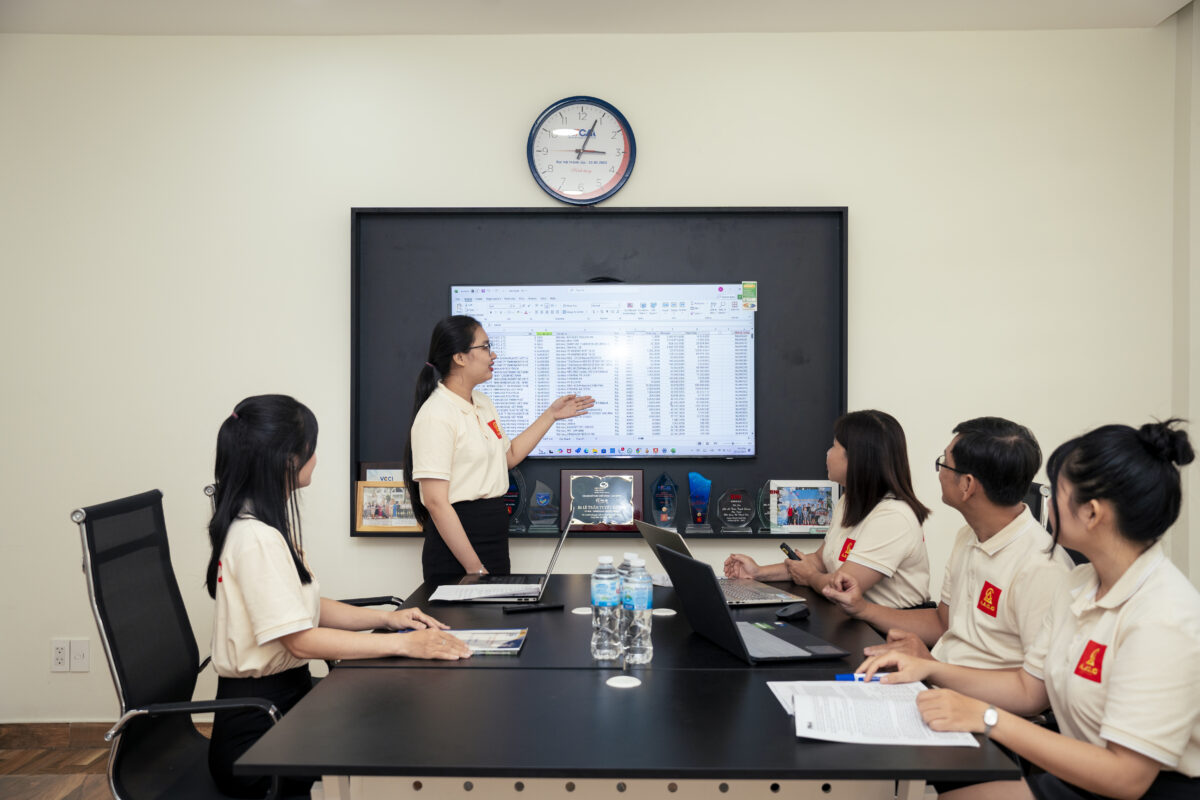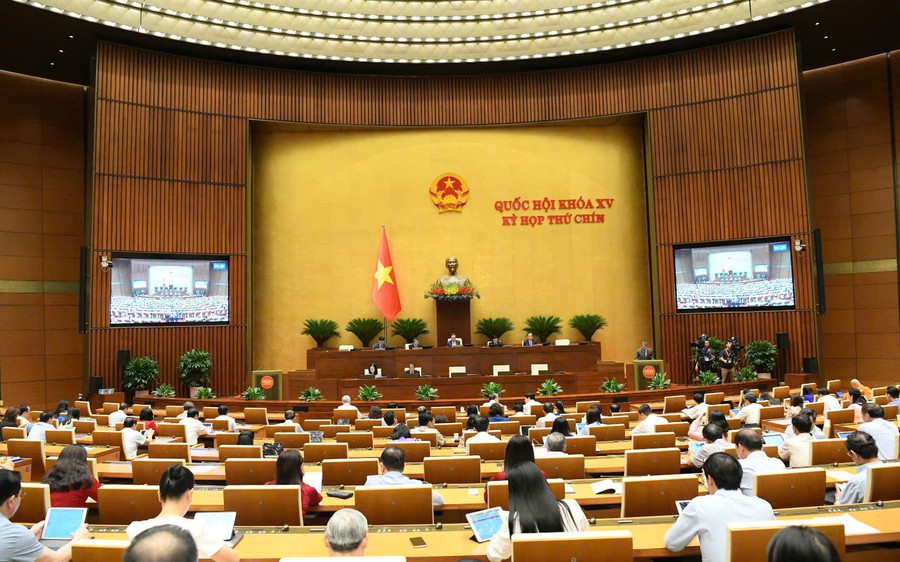


Over nearly 40 years of economic reform, Vietnam has transitioned from a centrally planned economy to a market-oriented system while actively pursuing comprehensive and deep international integration alongside rapid industrialization and modernization. With a uniquely innovative approach developed and implemented by the Vietnamese people, the country has achieved historic milestones, as emphasized by General Secretary Nguyễn Phú Trọng: “Never before has our nation had such stature, potential, international position, and prestige as it does today.”
From an underdeveloped agricultural economy with a small economic scale—just $26.3 billion GDP in the early days of reform—Vietnam has seen its economy grow to $430 billion in 2023, with GDP per capita reaching $4,300, a 58-fold increase compared to the initial reform years. Additionally, the multidimensional poverty rate has dropped to 2.9%.
Furthermore, Vietnam has moved from a closed, isolated economy to one with a high degree of global integration, ranking as the 22nd largest trading partner in the world. In 2023, total import-export turnover reached nearly $700 billion, while foreign investment inflows hit a record $23 billion—the highest investment level ever recorded in Vietnam—despite contractions in major markets and ongoing global supply chain disruptions. This stands as a remarkable achievement.

With ongoing economic reforms and market liberalization, Vietnam’s adaptability and resilience have steadily improved. In recent years, following the principle of safe adaptation, Vietnam has successfully overcome the negative impacts of the COVID-19 pandemic, earning high recognition from the international community and emerging as a beacon of stability, economic recovery, and development, despite domestic and global challenges.
By leveraging global insights and experiences, particularly from economies with similar development trajectories, Vietnam can draw lessons from both successes and failures to identify feasible solutions for overcoming obstacles, limitations, and challenges in its reform, integration, and growth journey.
The development of new economic models, including green economy, circular economy, and sharing economy, along with emerging industries such as semiconductor manufacturing, artificial intelligence, and clean energy, will be critical focal points. Additionally, Vietnam must prioritize private sector growth, financial system reform, national governance, social development, decentralization policies, and regional development frameworks.
To avoid development pitfalls, Vietnam must address not only the middle-income trap but also the low-wage labor trap, the unsustainable growth trap, and the risks of rapid expansion without long-term environmental and social considerations. These lessons will play a pivotal role in strategic policymaking, ensuring Vietnam achieves its sustainable development goals with a long-term vision toward 2045.

“Vietnam’s remarkable efforts in economic reform have led to rapid GDP growth and a sharp decline in poverty rates. Previously, over 20% of the population lived in poverty, but sustained reforms have significantly improved living standards. Life expectancy has increased from 61 years in the 1970s to 76 years today, and the average years of schooling for Vietnamese citizens has also risen substantially. As an economic expert, I am pleased to see how these positive impacts of economic reform and development have bridged the gap between Vietnam and the rest of the world.
With trade liberalization efforts, Vietnam joined the World Trade Organization (WTO) in 2007, further strengthening its role in the region and globally, making it a major export hub. Today, Vietnam’s trade-to-GDP ratio exceeds 200%, demonstrating that it is one of the most open economies in the world.
Vietnam has increasingly integrated into global value chains, expanding exports and imports to numerous countries worldwide. However, instead of only reflecting on past achievements, Vietnam must look ahead to further economic growth and shape its future through export-driven development. The key priority should be enhancing export quality—not just quantity or product range.
Historically, Vietnam’s exports relied on labor-intensive industries, leveraging low labor costs and affordable production expenses. Over the past 20 years, export volume has grown tenfold, yet the average value per unit exported has only doubled.
To achieve high-income country status, Vietnam must accelerate growth and assert a stronger presence in global supply chains by exporting higher-value products. This requires a shift toward advanced manufacturing and technology-intensive industries, such as semiconductors and large-scale production sectors like electronics components and footwear. By doing so, Vietnam can solidify its role in global value chains and ensure long-term sustainable economic progress.

“Five Remarkable Achievements of Vietnam After Nearly 40 Years of Economic Reform
- Transition from a Planned Economy to a Market-Oriented System Vietnam shifted its economic mindset from centralized planning to market-driven mechanisms. While this transformation faced both progress and setbacks, the overall long-term shift toward market-oriented management marks a significant milestone in the country’s development.
- Redefining the Role of the State in Economic Management Instead of state-owned enterprises dominating economic activities, the government has reduced direct intervention, focusing more on regulatory oversight, legal frameworks, and policy-making to ensure efficient economic operations.
- Strengthening Private Sector Growth Although Vietnam’s businesses are predominantly small and medium-sized enterprises (SMEs), the private sector has gained greater recognition. Many Vietnamese companies and corporations are now expanding into international markets.
- Bold and Strategic International Economic Integration From the early reform years, Vietnam pursued a clear path toward global economic integration. Today, Vietnam’s trade value is double its GDP, and the country actively attracts foreign investment. While not every Vietnamese business has expanded globally, many have entered global supply chains due to foreign investment in Vietnam—aligning the country with the global economic landscape and accelerating development momentum.
- Maintaining Economic Stability Amid Global Crises Over the last 40 years, Vietnam has navigated Asian economic crises, the global financial crisis, and COVID-19 challenges. Throughout these disruptions, Vietnam has remained open to trade while ensuring macroeconomic stability, preserving its achievements, and sustaining long-term growth.

“Vietnam has successfully maintained long-term sustainable poverty reduction, with many countries looking to Vietnam for insights and best practices. Between 2012 and 2015, Vietnam implemented 16 poverty reduction programs, addressing various dimensions of development, focusing on vulnerable communities affected by geographical, living conditions, or language barriers. Instead of single-dimensional poverty reduction that solely focuses on economic factors, Vietnam has shifted to a multidimensional approach, incorporating healthcare, education, employment, and access to clean water.
Additionally, Vietnam has embraced community-based poverty reduction, promoting greater participation in global value chains. A critical component of Vietnam’s poverty alleviation strategy is the empowerment of local communities, fostering self-reliance rather than dependence on external aid. Vietnam’s poverty reduction programs are continuously updated and refined to align with new socioeconomic conditions.
Vietnam has boosted public investment to enhance access to education policies, ensuring that new generations have better job transition opportunities, improved income potential, and greater contributions to national development. Poverty assessment reports highlight that families across provinces and cities recognize education as a key strategy to escaping poverty and breaking the cycle of deprivation. A strong education investment strategy serves as a fundamental tool to help citizens transform their lives and contribute to the country—a critical focus for the coming years.
Moreover, Vietnam has ensured equal access to employment opportunities, challenging gender biases, and encouraging both men and women to participate in the labor market, driving national economic growth. Fair employment access fosters trust and optimism among citizens, reinforcing belief in future economic opportunities through hard work and perseverance.
Additionally, the Vietnamese Government plays a crucial role in expanding strategic partnerships, listening to diverse perspectives from international organizations, and leveraging global lessons to strengthen Vietnam’s presence on the international stage. This proactive approach helps drive economic growth while ensuring sustainable poverty reduction.

“
In the coming years, financial system reforms must prioritize eliminating cross-ownership instead of only addressing non-performing loans and modernizing governance frameworks. More importantly, weak banks entangled in cross-ownership structures must be thoroughly restructured.
Regarding capital markets, the consequences of past rapid expansion, coupled with large shareholders’ market manipulation, necessitate a shift in Vietnam’s capital market restructuring focus—moving away from legal frameworks toward policy enforcement and implementation. Rather than tolerating partial market monopolization, Vietnam should align with international best practices, emphasizing investor protection and safeguarding minority shareholders’ rights.
Additionally, stronger commitment to market-driven management tools is crucial. After nearly 40 years, Vietnam’s financial system maturity and governance capabilities have reached a level where market-based policy instruments can be adopted. In monetary policy management, Vietnam must eliminate administrative controls, avoid interest rate and credit growth regulations, while ensuring financial system stability in line with international standards. Vietnam’s financial success could have been greater had regulators firmly required financial institutions to comply with Basel II standards.
Furthermore, Vietnam must urgently establish legal frameworks for emerging financial services, focusing on three key areas: (i) Digital finance & digital banking (ii) Green finance (iii) Commodity derivatives market development
VnEconomy
Nội dung bài viết được đăng tải trên Tạp chí Kinh tế Việt Nam số 14-2024 phát hành ngày 01/04/2024. Kính mời Quý độc giả tìm đọc tại đây:
https://postenp.phaha.vn/chi-tiet-toa-soan/tap-chi-kinh-te-viet-nam

VnEconomy 05/04/2024 18:51
The full content of the article is published in Vietnam Economic Journal, Issue 14-2024, released on April 1, 2024.
Readers are invited to explore the article here:
https://postenp.phaha.vn/chi-tiet-toa-soan/tap-chi-kinh-te-viet-nam









